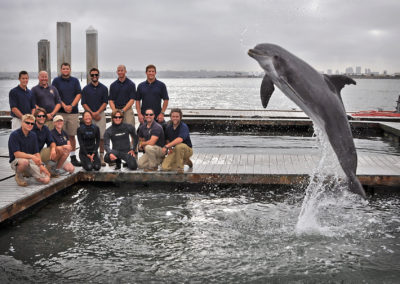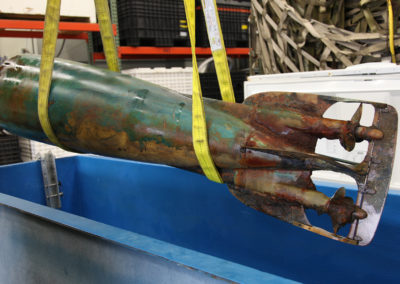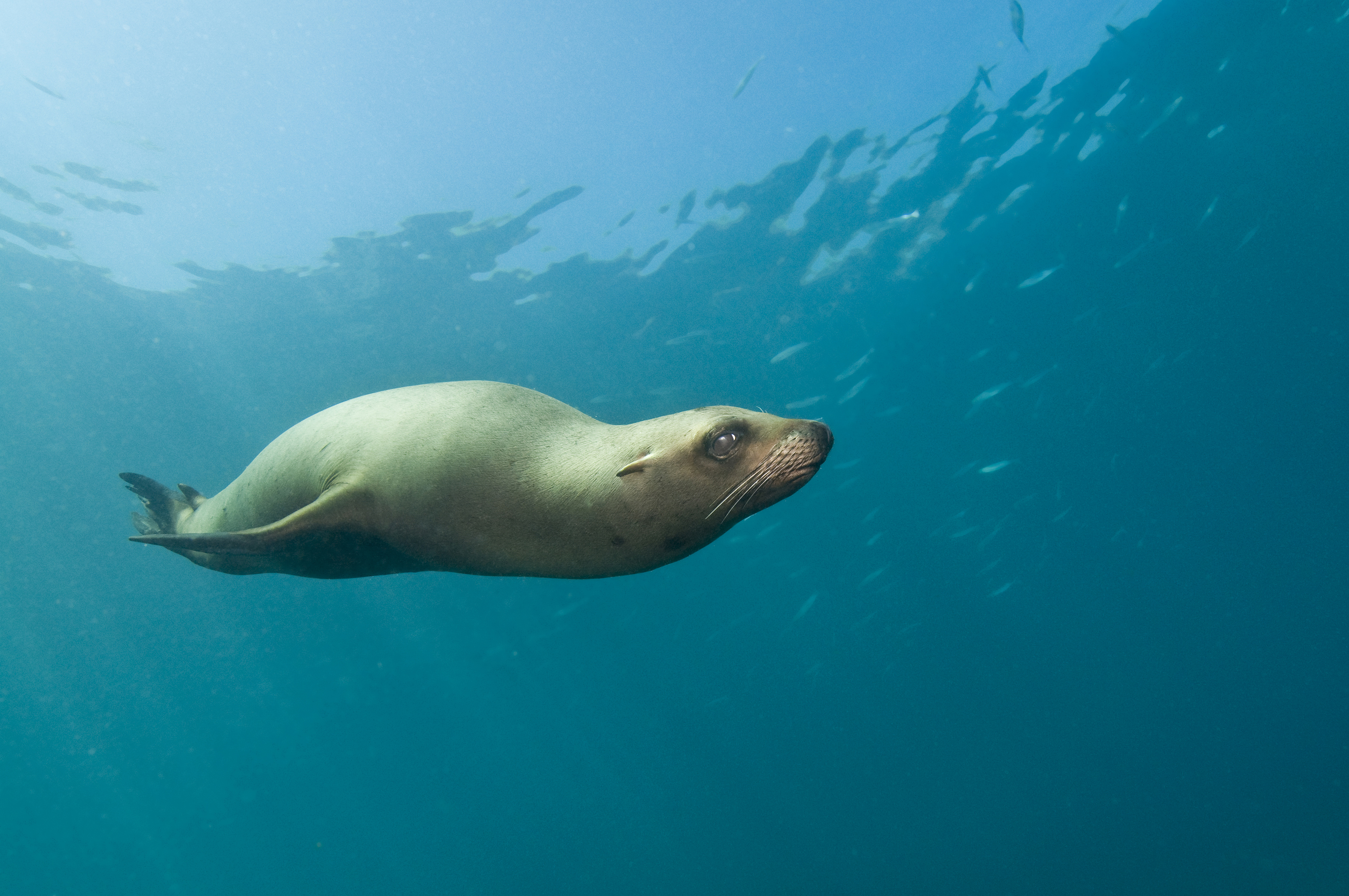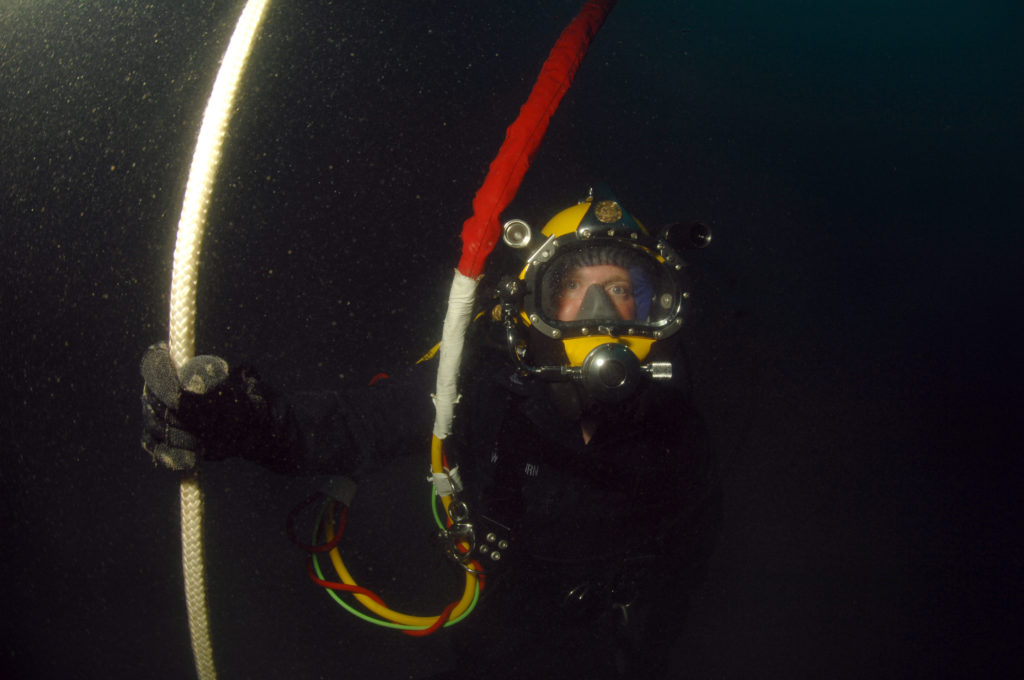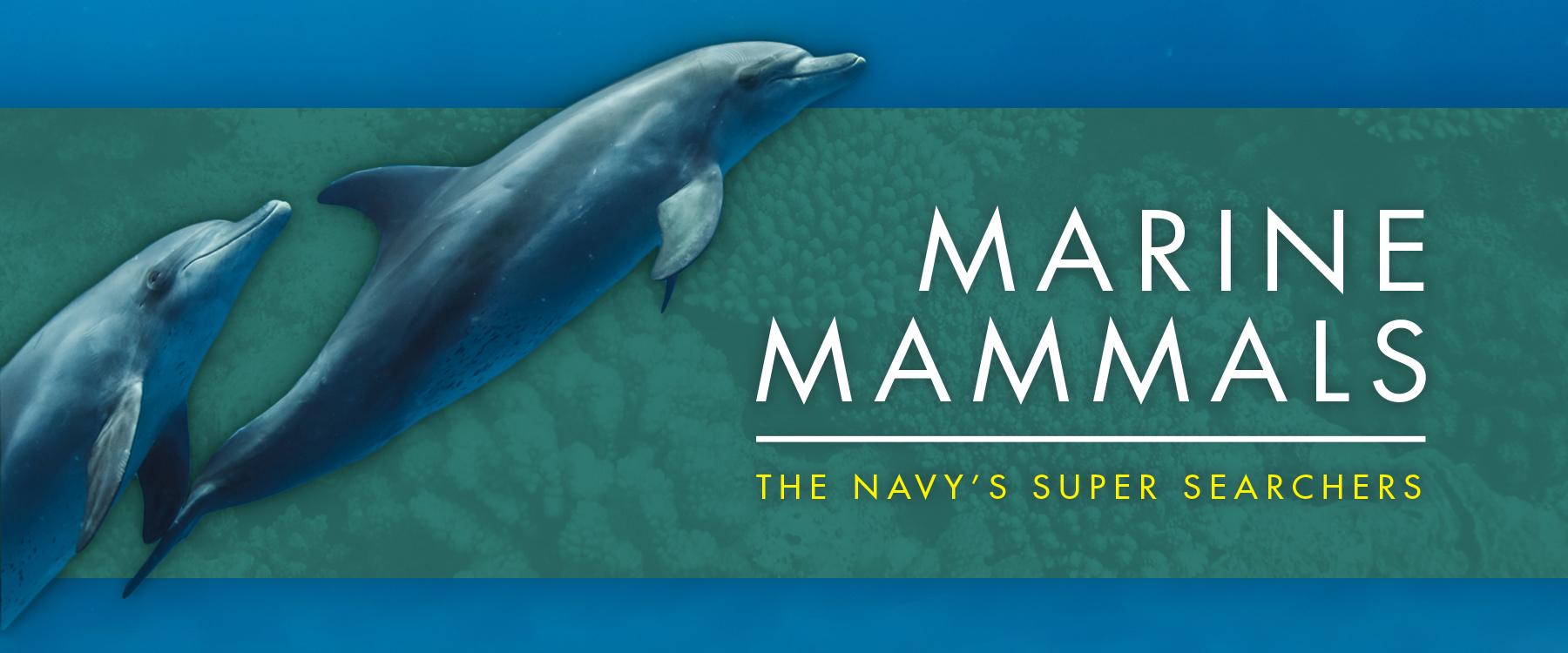
The Science of Marine Mammal Abilities
Marine mammals have been adapting to life in the oceans for millions of years. Scientists think the first marine mammals appeared about 65 million years ago, around the time most dinosaurs went extinct.
Dolphins and sea lions have existed for about five million years. Over those millennia, their bodies grew increasingly skilled at swimming, diving, and navigating in the water.
Echolocation
Dolphins Only
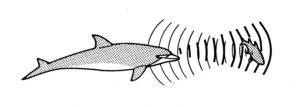 Dolphins use biological sonar called echolocation to “see” underwater. Echolocation reveals an object’s size, shape, distance, density, and speed. Dolphin echolocation works better and faster than any sonar technology created by humans.
Dolphins use biological sonar called echolocation to “see” underwater. Echolocation reveals an object’s size, shape, distance, density, and speed. Dolphin echolocation works better and faster than any sonar technology created by humans.
A dolphin echolocates by making clicking noises which send sound waves into the water. When the sound waves hit something, echoes bounce back to the dolphin. The returning echoes give the dolphin rich detail about the target object in just fractions of a second. Scientists are still discovering how dolphins’ brains receive and process this information.
Click play to hear what echolocation clicks sound like. An echolocating dolphin produces between 7,800 and 20,000 clicks per second, far more than humans can perceive!
The Find of a Lifetime
How well does echolocation work? In 2013, it unearthed one of the rarest torpedoes in the world.
A veteran dolphin named Ten made the surprising find during a practice drill off San Diego. Using her echolocation skills, Ten detected a mine-like object in a training area. The next week a dolphin named Spetz confirmed the presence of the same object.
Investigating divers discovered the tail section from a 19th-century Howell torpedo. With further searching, the dolphins located the midsection nearby.
![]() The story of this torpedo could be a whole exhibit itself — and now it is! Click here to explore our online exhibit about the history, discovery, and conservation of Howell torpedo #24.
The story of this torpedo could be a whole exhibit itself — and now it is! Click here to explore our online exhibit about the history, discovery, and conservation of Howell torpedo #24.
Hearing
Dolphins and Sea Lions
Dolphins and sea lions depend heavily on their hearing, especially in murky water with low visibility.
Dolphins use hearing in conjunction with echolocation. They can change the pitch of their echolocation clicks to hear in noisy environments. Their ability to compensate for noise is one reason dolphin echolocation works better than human-made sonar technology.
Sea lions cannot echolocate. They rely on their directional hearing, which can pinpoint the direction a sound comes from. Sea lions use their directional hearing to locate exercise mines equipped with noise-producing pingers. They find training mines faster than sonar technology can.
Sight
Dolphins and Sea Lions
Marine mammals evolved to see well in water, which refracts (bends) light. The part of their eyes that bends and focuses light, the lens, is spherically shaped to adjust for light refraction in water.
In low-light conditions, the eyes of marine mammals maximize available light. Sea lion and dolphin pupils dilate (enlarge) in dark environments to absorb more light. Both species have a special membrane called the tapetum lucidum that improves their low-light vision.
While dolphins use echolocation more than sight, sea lions depend greatly on sight to locate objects underwater.
Diving
Dolphins and Sea Lions
Marine mammals are natural divers. A 300-foot dive is deep for human divers. Sea lions can dive up to 1,100 feet and dolphins can dive deeper than 1,800 feet.
When humans and marine mammals dive, deep-sea pressure forces nitrogen into their body tissues. This can hurt or kill human divers, as every breath they take increases nitrogen absorption. Humans must expel excess nitrogen in a complicated process called decompression.
Marine mammals do not suffer ill effects or need decompression. They absorb less nitrogen by diving on a single breath and tolerate higher nitrogen levels. This means dolphins and sea lions can dive deeper, quicker, and more often than human divers.
How are human and marine mammal dives different?
A sea lion and a human diver search underwater at 300 feet for 20 minutes. How do their dives compare?
Oxygen Efficiency
Dolphins and Sea Lions
Marine mammals evolved to see well in water, which refracts (bends) light. The part of their eyes that bends and focuses light, the lens, is spherically shaped to adjust for light refraction in water.
In low-light conditions, the eyes of marine mammals maximize available light. Sea lion and dolphin pupils dilate (enlarge) in dark environments to absorb more light. Both species have a special membrane called the tapetum lucidum that improves their low-light vision.
While dolphins use echolocation more than sight, sea lions depend greatly on sight to locate objects underwater.
Dolphins and sea lions drop their heart rates by 80–90 percent when they dive. Press play to compare their heart rates on the surface and during a dive.
Surfaced Heart Rate:
95–100 beats per minute
Diving Heart Rate:
10–20 beats per minute

